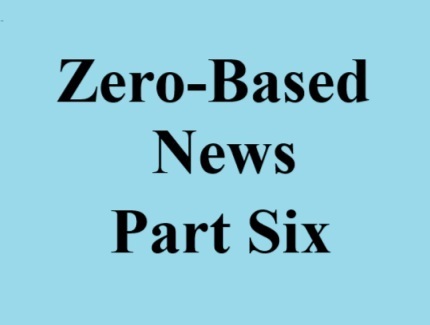Peirspictiochtai Ar An Saol
Zero-Based News
Part Six

The news media landscape has transformed over the years in the United States. It was not that long ago that many Americans got their news content through a local print newspaper, through a few local radio stations, and through three television broadcast networks and one public television system.
Times have changed.
At the time of the country's founding, news traveled by word-of-mouth among individuals and through printed newspapers and pamphlets.
As years went on, technological advancements created new formats that would provide news content to Americans. Usually, it would be years before inventions of new formats would become major sources of news content.
Telegraph wires tied sources of news to entities preparing news content in the 1800s. Telephone wires followed suit late in that century.
In the 1920s, radio broadcasting networks and stations became more common as sources of news content. Television broadcasting stations and networks became a major source of news content in the decade after World War II. Cable television systems started as modest operations about the same time, but blossomed into major sources of news content starting in the 1980s.
The internet became part of the daily lives of many Americans in the mid-1990s. Digital news content followed.
Social media through websites and smartphone applications became sources of news content in the past twenty years.
To best be able to understand zero-based news, the next set of news columns will focus on specific types of formats utilized in journalism.
There are at least fifteen types of formats used in journalism, with each type offering different elements of news content to readers, viewers, and/or listeners. Some may consider all of these formats to be the same. Others recognize different types of formats provide their types of news content in different ways. Some may consider a few of these formats to not be sources of news content.
Print formats remain a major source of news content in the U S. While decreasing in numbers and size, newspapers are the most common type of print publications. Formats of individual newspapers typically focus on local news, regional/state news, national news, and/or international news.
Magazines are another type of print format used to provide news content. Formats for individual magazines include ones that focus on local news, regional/state news, national news, and/or international news. Subject-oriented magazines are another type of print format for news content.
News content is also provided through print newsletters. Many newsletters focus their news content on a specific subject.
The next news column in this series will focus on additional types of formats utilized in journalism.
Peirspictiochtai Ar An Saol – Gaelic – Irish – for "Perspectives On Life" is a column focused on aspects of accountability and responsibility as well as ways people look at life.
Contact Richard McDonough at
© 2025 Richard McDonough










